Introduction
Pumpkin cake is a dessert loved for its warm spices and moist texture, making it a staple of fall celebrations. It captures the spirit of the season with every bite, bringing comfort and joy to the table. In addition to its delicious flavor, pumpkin cake has a rich history that connects it to autumn traditions and gatherings.
Why Pumpkin Cake Is a Fall Favorite
Pumpkin cake embodies the flavors of fall. For instance, the combination of pumpkin’s natural sweetness with spices like cinnamon and nutmeg creates a dessert that feels both cozy and indulgent. Furthermore, its deep orange color makes it visually appealing, ensuring it stands out as the centerpiece for any celebration.
A Brief History of Pumpkin in Baking
Pumpkin has been a key ingredient in baking for centuries. For example, Native Americans introduced pumpkins to European settlers, who quickly recognized its versatility and usefulness. Over time, recipes for pumpkin-based desserts like pies and cakes became popular, especially in the 18th century. Today, pumpkin cake remains an essential part of fall traditions, especially during harvest festivals.
Why Make Pumpkin Cake?
Health Benefits of Pumpkin
Pumpkin offers more than just flavor; it also provides valuable nutrients. For instance, it is rich in vitamins A and C, which support immune health and improve skin. Additionally, its antioxidants and fiber content promote digestion and overall wellness. These benefits make pumpkin cake a treat you can enjoy with less guilt.
The Perfect Dessert for Seasonal Celebrations
Pumpkin cake is ideal for seasonal events like Thanksgiving and Halloween. Its comforting spices and moist texture perfectly complement the warmth of these celebrations. Moreover, adding a cream cheese frosting enhances the cake’s flavor with a creamy, tangy finish, making it a crowd-pleaser at any gathering.
Versatility of Pumpkin Cake
One of the best things about pumpkin cake is its flexibility. For example, you can bake it as a layered cake, a Bundt cake, or even cupcakes, depending on the occasion. In addition, you can personalize it with add-ins like chocolate chips, nuts, or dried fruit. This versatility ensures there’s a version of pumpkin cake to suit everyone’s tastes.
With its rich history, health benefits, and adaptability, pumpkin cake continues to be a favorite dessert for fall. As you bake and experiment with different versions, you’ll find that this timeless recipe brings a unique warmth to every occasion. So gather your ingredients and enjoy the flavors of the season!
Key Ingredients for Pumpkin Cake
A delicious pumpkin cake starts with selecting the best ingredients. Each element contributes to the cake’s flavor, texture, and overall quality. Here’s a guide to help you make the right choices.
Choosing the Right Pumpkin Puree
The pumpkin puree is the star ingredient, so it’s important to choose wisely.
- Canned vs. Homemade: Canned pumpkin puree is a convenient and reliable option. However, homemade puree can provide a fresher and more natural taste. If you go the homemade route, be sure to drain any excess liquid to avoid a soggy cake.
- What to Avoid: Always use plain pumpkin puree rather than pumpkin pie filling, which contains added sugars and spices that could overpower your recipe.
Best Flour Types
The type of flour you use greatly affects the texture of your pumpkin cake.
- All-Purpose Flour: This is the most versatile option and works well for most recipes. It creates a balance between softness and structure.
- Cake Flour: If you prefer a lighter, fluffier texture, cake flour is a great choice.
- Gluten-Free Flour Blends: For those avoiding gluten, a pre-mixed gluten-free flour blend is the best alternative. Make sure it includes a binding agent like xanthan gum to keep the cake from crumbling.
Sweeteners and Their Alternatives
Sweeteners add flavor and moisture, which are essential for a good pumpkin cake.
- Granulated Sugar: This is the classic sweetener for most recipes and provides consistent results.
- Brown Sugar: Adds a rich, caramel-like flavor that pairs well with the spices and pumpkin.
- Natural Alternatives: If you want a healthier option, try using honey, maple syrup, or coconut sugar. Keep in mind, though, that syrups may require adjusting the recipe’s liquid content.
Pumpkin Spices and Flavor Enhancements
The right combination of spices and flavor boosters takes a pumpkin cake from good to extraordinary. With a little care, you can achieve the perfect balance.
The Role of Cinnamon, Nutmeg, and Clove
These spices are essential for giving pumpkin cake its signature warmth:
- Cinnamon: The most important spice, cinnamon adds a sweet, warm flavor that defines the cake’s profile.
- Nutmeg: Offers a slightly nutty, sweet taste that complements the cinnamon perfectly.
- Clove: Provides a bold and earthy kick. Use it sparingly, as too much can overpower the other spices.
Using Vanilla Extract and Molasses
For added depth, vanilla extract and molasses are excellent choices:
- Vanilla Extract: A small amount of vanilla brings out the sweetness of the pumpkin while balancing the spices.
- Molasses: Adds a deep, caramel-like richness. However, use it in moderation to ensure it doesn’t overshadow the spices.
Adding Orange Zest
For a bright, refreshing twist, include orange zest:
- How to Use It: Simply grate the outer skin of an orange and fold it into the batter. This touch of citrus elevates the flavors and gives the cake a subtle but delightful enhancement.
By carefully selecting your pumpkin puree, flour, sweeteners, and spices, you can create a pumpkin cake that’s bursting with flavor. Additionally, using vanilla, molasses, and orange zest ensures your cake will stand out with a unique and delicious taste. Whether you follow a traditional recipe or experiment with these tips, your pumpkin cake is sure to impress!.
Popular Pumpkin Cake Variations
Pumpkin cake is incredibly versatile, making it suitable for a variety of occasions and preferences. Here are some of the most popular variations, each offering a unique twist on this classic dessert.
Classic Pumpkin Layer Cake
This traditional option remains a favorite for many, thanks to its moist layers and rich cream cheese frosting. It is ideal for birthdays, holidays, or any festive gathering where a show-stopping dessert is needed.
Pumpkin Spice Bundt Cake
For those who appreciate visual appeal alongside flavor, the Pumpkin Spice Bundt Cake is a great choice. Baked in a Bundt pan, this cake has an elegant shape and a flavor packed with cinnamon, nutmeg, and cloves. Moreover, a drizzle of glaze or powdered sugar makes it look even more appealing.
Gluten-Free Pumpkin Cake
If you need a gluten-free option, this variation delivers all the flavor without compromising texture. Using almond or coconut flour, it stays moist and delicious, ensuring that everyone at the table can enjoy it.
Vegan Pumpkin Cake
For plant-based diets, vegan pumpkin cake offers a delightful alternative. It uses dairy-free milk, flaxseed eggs, and coconut oil to create a lighter yet equally flavorful cake. This variation is perfect for serving at gatherings with mixed dietary preferences.
Step-by-Step Pumpkin Cake Recipes
Whether you’re an experienced baker or just starting, there’s a pumpkin cake recipe for you. These step-by-step instructions ensure success, no matter which type of cake you choose.
Traditional Pumpkin Cake
This recipe delivers a classic, moist cake that’s perfect for any occasion.
Steps:
- First, preheat your oven to 350°F (175°C) and grease a 9×13-inch pan.
- In one bowl, mix all dry ingredients, and in another, combine the wet ingredients.
- Gradually add the dry ingredients to the wet mixture, stirring until smooth.
- Next, pour the batter into the prepared pan and bake for 30–35 minutes.
- Finally, let the cake cool before frosting with cream cheese or glaze.
Quick and Easy Pumpkin Sheet Cake
When you’re short on time but need a dessert for a crowd, this sheet cake is the way to go.
Steps:
- Combine all ingredients in one bowl to save time.
- Spread the batter evenly in a sheet pan and bake at 350°F (175°C) for about 25 minutes.
- After cooling, finish with a frosting of your choice or a dusting of powdered sugar for simplicity.
Pumpkin Roll Cake with Cream Cheese Filling
This elegant dessert creates stunning spirals of pumpkin and cream cheese.
Steps:
- Start by preparing a thin cake layer in a jelly roll pan and baking it for 12–15 minutes.
- While the cake is still warm, roll it in parchment paper to form its shape.
- Once cooled, unroll it carefully, spread the cream cheese filling, and roll it back tightly.
- Refrigerate before slicing for neat, visually appealing swirls.
By exploring these variations and recipes, you can find a pumpkin cake that suits any occasion. Additionally, the step-by-step guides make it easy to bake confidently. So, whether you prefer a quick dessert or an impressive centerpiece, pumpkin cake never fails to delight.
Baking Techniques for Pumpkin Cake
Perfecting a pumpkin cake requires paying attention to key details and following proven techniques. With the right methods, you can ensure a cake that is moist, evenly baked, and free of common errors.
Achieving the Perfect Moist Texture
- Choose Moisture-Rich Ingredients: To begin with, incorporate ingredients like pumpkin puree, oil, or buttermilk. These not only add moisture but also enhance the cake’s flavor.
- Measure Ingredients Carefully: Accurate measurements are crucial. For example, too much flour can dry out the cake, so use proper measuring tools for consistent results.
- Monitor Baking Time Closely: Overbaking can lead to a dry cake. Check the cake a few minutes before the timer goes off by inserting a toothpick into the center. If it comes out with a few moist crumbs, the cake is done.
Tips for Even Baking
- Preheat the Oven: Always preheat the oven to the recommended temperature. An uneven oven temperature often causes the cake to bake unevenly.
- Use Room-Temperature Ingredients: Ingredients like eggs and butter should be at room temperature. This step ensures they blend smoothly, which contributes to an even batter.
- Rotate the Pan Midway: To ensure even heat distribution, rotate the baking pan halfway through the cooking time. However, do this gently to avoid disturbing the rising process.
How to Avoid Common Baking Mistakes
- Avoid Overmixing the Batter: Overmixing develops excess gluten, which can make the cake dense. Mix the ingredients just until combined for the best results.
- Check Leavening Agents: Before starting, confirm that your baking powder or baking soda is fresh. Using expired leavening agents can result in a flat cake.
- Grease and Line the Pan Properly: To prevent sticking, grease the pan thoroughly and consider lining it with parchment paper for extra assurance.
Decorating Pumpkin Cakes
Decorating your pumpkin cake allows you to enhance its appearance and flavor. By adding thoughtful touches, you can make your cake visually stunning and seasonally appropriate.
Cream Cheese Frosting Tips
- Achieve Smooth Consistency: Start by beating softened cream cheese and butter until they are well blended. Then, slowly add powdered sugar to avoid lumps.
- Enhance the Flavor: For extra flavor, try adding a splash of vanilla extract or a pinch of cinnamon. These additions pair wonderfully with the spiced cake.
- Spread Evenly: Use an offset spatula to create a smooth finish, or pipe the frosting for decorative swirls that add elegance.
Using Candied Pumpkin as Garnish
Adding candied pumpkin pieces can elevate your cake’s visual appeal:
- How to Make It: Simmer small pumpkin cubes in a sugar-water mixture until tender, then cool them on parchment paper to crystallize.
- How to Use It: Arrange the candied pumpkin on top of the frosting, or place them around the cake’s edges as a decorative and edible garnish.
Creative Fall-Themed Decorations
- Edible Chocolate Leaves: Melt white chocolate and tint it with food coloring to match fall shades. Pipe leaf shapes onto parchment paper and let them harden before placing them on the cake.
- Spice Accents: Dust cinnamon or nutmeg lightly over the frosting for a warm, rustic touch.
- Rustic Frosting Designs: Create texture in the frosting by using a fork or spatula to make patterns, giving the cake a homemade yet elegant appearance.
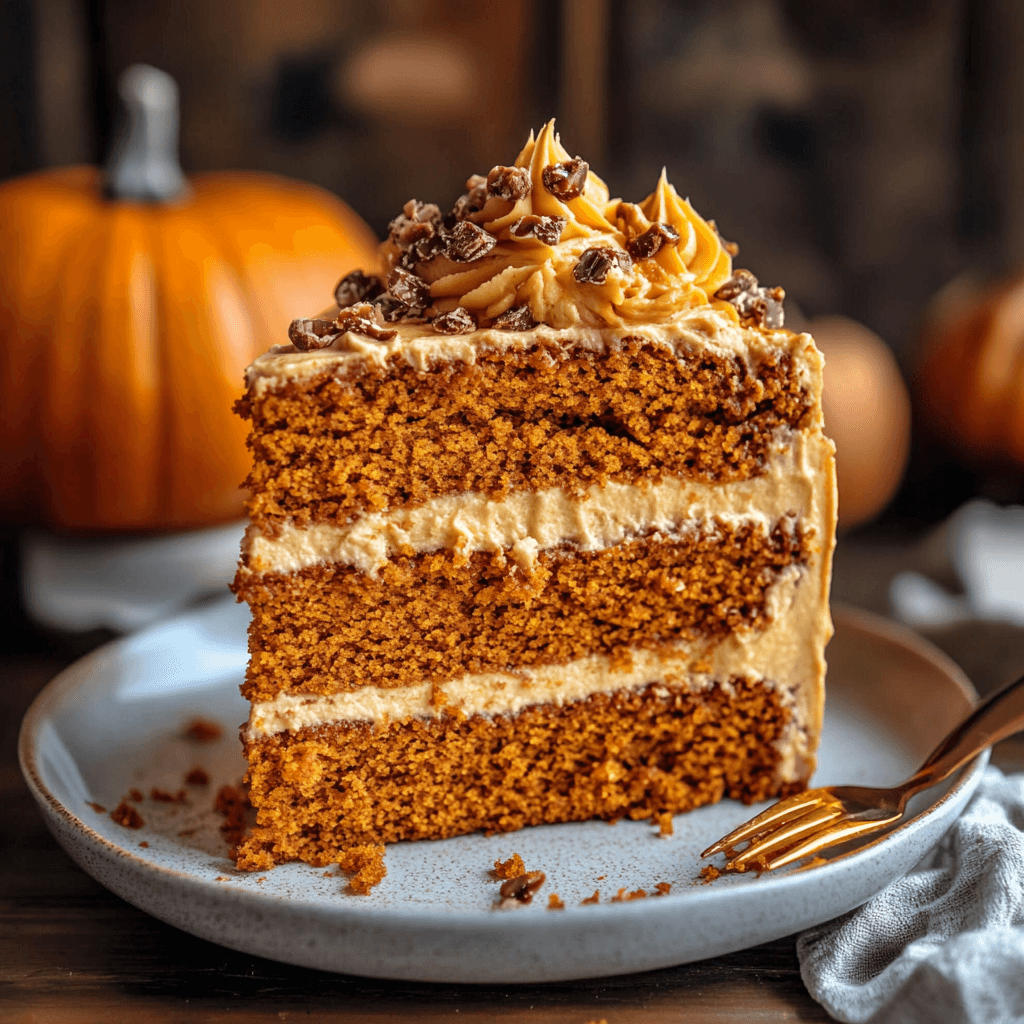
By following these baking techniques and decorating tips, you can confidently create a pumpkin cake that is both flavorful and visually stunning. Furthermore, these ideas ensure that your cake will stand out at any gathering, delighting both the eyes and the taste buds.
Serving Pumpkin Cake
Pumpkin cake is a versatile dessert that can be enjoyed on its own or paired with complementary elements to elevate the experience. Whether served with a beverage or transformed into another dessert, it’s a crowd-pleaser every time.
Ideal Beverage Pairings
- Coffee: A warm cup of coffee, especially a latte or cappuccino, pairs wonderfully with the spiced flavors of pumpkin cake.
- Tea: Chai tea or spiced herbal blends complement the cinnamon and nutmeg in the cake.
- Milk: A glass of cold milk provides a refreshing contrast to the cake’s sweetness and richness.
- Dessert Wines: Sweet wines like Moscato or Riesling bring out the cake’s earthy and spiced flavors, adding a touch of sophistication to the pairing.
Using Pumpkin Cake in Desserts Like Trifles or Parfaits
Leftover pumpkin cake can be transformed into delicious layered desserts:
- Pumpkin Trifle: Crumble the cake and layer it with whipped cream, pudding, and caramel sauce in a glass dish.
- Pumpkin Parfait: Combine crumbled pumpkin cake with yogurt or mousse for a lighter dessert option. Add a sprinkle of granola or nuts for texture.
Storing and Freezing Pumpkin Cake
Proper storage ensures your pumpkin cake stays fresh and delicious, whether for short-term or long-term enjoyment.
Best Practices for Keeping Cake Fresh
- At Room Temperature: If unfrosted, store the cake in an airtight container at room temperature for up to three days. Frosted cakes should be kept in the refrigerator to prevent spoilage.
- In the Refrigerator: Cover the cake tightly with plastic wrap or store it in an airtight container to keep it moist. Refrigerated cakes can last up to one week.
Freezing Tips for Long-Term Storage
- Unfrosted Cakes: Wrap the cake tightly in plastic wrap, followed by aluminum foil, and place it in a freezer-safe bag. It can be frozen for up to three months.
- Frosted Cakes: Freeze the cake uncovered for 1–2 hours until the frosting is firm, then wrap it securely in plastic wrap and foil. Thaw in the refrigerator overnight when ready to serve.
- Portion Control: Slice the cake before freezing to allow for easy thawing of individual portions.
Healthier Pumpkin Cake Options
For those looking to make pumpkin cake a little lighter or cater to dietary needs, there are several easy modifications.
Low-Sugar Pumpkin Cakes
- Natural Sweeteners: Substitute part of the sugar with honey, maple syrup, or stevia to reduce the overall sugar content.
- Applesauce: Use unsweetened applesauce as a sweetener and moisture booster, reducing the need for sugar and fat.
Dairy-Free and Gluten-Free Variants
- Dairy-Free: Replace dairy milk with almond, coconut, or oat milk, and use coconut oil or vegan butter instead of regular butter.
- Gluten-Free: Use almond flour, coconut flour, or a gluten-free baking blend. Be sure to add a binding agent like xanthan gum to maintain the cake’s structure.
Substituting Butter with Coconut Oil
- Coconut oil is an excellent alternative to butter, providing moisture and a subtle coconut flavor.
- Use a 1:1 ratio when substituting butter with coconut oil. For a neutral taste, choose refined coconut oil instead of virgin.
By exploring these serving, storing, and health-conscious options, you can enjoy pumpkin cake in a variety of ways while catering to different preferences and needs. Whether pairing it with your favorite drink, reinventing leftovers, or making it healthier, pumpkin cake remains a versatile and delightful treat.
Frequently Asked Questions (FAQs)
What is the difference between pumpkin puree and canned pumpkin?
Pumpkin puree and canned pumpkin are often used interchangeably, but there can be slight differences.
- Pumpkin Puree: This refers to the cooked and blended flesh of pumpkins, often made at home. It’s free of additives and offers a fresher, more natural flavor.
- Canned Pumpkin: Typically, this is 100% pumpkin, but some brands may include a blend of different squashes. Always check the label to ensure it’s pure pumpkin and not pumpkin pie filling, which contains added sugar and spices.
Why is my pumpkin cake too moist?
A pumpkin cake that is overly moist might result from:
- Too Much Pumpkin: Using more pumpkin puree than the recipe calls for can make the batter overly wet.
- Incorrect Measurements: Adding too much liquid (milk, oil, or water) can upset the balance of the ingredients.
- Undercooking: If the cake is not baked long enough, it may retain too much moisture. Use a toothpick to test for doneness; it should come out with a few crumbs but no wet batter.
Can you use pumpkin instead of oil in cake mix?
Yes, you can substitute pumpkin for oil in a cake mix.
- Ratio: Replace oil with an equal amount of pumpkin puree (e.g., 1 cup of oil = 1 cup of pumpkin puree).
- Benefits: This swap not only reduces fat content but also adds moisture and a subtle pumpkin flavor to the cake.
- Tip: Since pumpkin is thicker than oil, you may need to adjust other liquids in the recipe to achieve the right consistency.
What kind of pumpkin is best for cake?
For pumpkin cake, the best pumpkins are those that are sweet, flavorful, and not overly watery.
- Sugar Pumpkins: Also known as pie pumpkins, these are smaller and have a sweeter flavor compared to larger carving pumpkins.
- Canned Pumpkin: For convenience, canned pumpkin is an excellent choice as it provides consistent texture and flavor.
- Avoid Large Pumpkins: Carving pumpkins or large field pumpkins are too watery and bland for baking, which can affect the cake’s taste and texture.
What’s the best way to store leftovers?
Keep leftovers in an airtight container in the fridge for up to 4 days. Reheat in the microwave or oven until hot and bubbly. For food safety tips, refer to USDA guidelines on leftovers .
These FAQs address common concerns about making pumpkin cake, helping you achieve the best results while understanding how to adjust for various ingredients and techniques.
Creative Pumpkin Cake Uses
Pumpkin cake can be more than just a dessert served as-is. By thinking creatively, you can transform it into entirely new and exciting treats.
Making Pumpkin Cake Pops
Pumpkin cake pops are a fun and easy way to repurpose leftover cake:
- Crumble the Cake: Start by breaking the pumpkin cake into fine crumbs in a bowl.
- Mix with Frosting: Then, combine the crumbs with a small amount of cream cheese frosting until the mixture sticks together.
- Form and Dip: After that, roll the mixture into balls, insert sticks, and dip each one in melted chocolate.
- Decorate: Finally, finish with sprinkles, chocolate drizzle, or a dusting of cinnamon for a festive look.
Transforming Leftovers into Bread Pudding
Leftover pumpkin cake can be transformed into a rich, spiced bread pudding that’s perfect for fall:
- Prepare the Cake: First, cut the cake into cubes and arrange them in a greased baking dish.
- Make the Custard: Next, whisk together eggs, milk, sugar, and a dash of vanilla extract and spices like cinnamon and nutmeg.
- Combine and Bake: Pour the custard mixture over the cake cubes and bake at 350°F (175°C) until the top is golden brown and the custard is set.
- Serve: To finish, serve warm with a drizzle of caramel sauce or a scoop of vanilla ice cream.
Pumpkin Cake Ice Cream Topping
Using pumpkin cake as an ice cream topping is another creative way to enjoy it:
- Prepare the Topping: Begin by toasting crumbled cake in the oven at 350°F (175°C) until it becomes crisp.
- Add to Ice Cream: Then, sprinkle the toasted crumbs over scoops of vanilla or caramel ice cream.
- Enhance the Flavor: For an extra touch, add whipped cream, a drizzle of caramel, or a sprinkle of cinnamon.
Regional Pumpkin Cake Recipes
Pumpkin cake recipes take on unique characteristics around the world, reflecting local tastes and traditions.
American Pumpkin Spice Variants
In the United States, pumpkin cakes are often spiced with cinnamon, nutmeg, and cloves, offering a warm and comforting flavor. Moreover, these cakes are typically paired with cream cheese frosting, making them a favorite for fall gatherings and holidays. Variations include Bundt cakes, cupcakes, and sheet cakes.
European Pumpkin Cake Styles
European pumpkin cakes are known for their rustic charm and often feature a more subdued sweetness:
- Italian Pumpkin Polenta Cake: This cake combines pumpkin with polenta, creating a dense yet hearty texture. It is often flavored with orange zest and almonds for added complexity.
- German Kürbiskuchen: This German pumpkin loaf cake includes warm spices, walnuts, and sometimes raisins. It is typically served plain or lightly dusted with powdered sugar.
Asian-Inspired Pumpkin Desserts
Asian pumpkin cakes focus on light textures and delicate flavors:
- Japanese Pumpkin Castella: Made with kabocha pumpkin, this sponge cake is airy, mildly sweet, and perfect for those who prefer less sugary desserts.
- Thai Pumpkin Coconut Cake: This variation uses coconut milk and pandan leaves, resulting in a moist, fragrant cake with tropical undertones.
By incorporating these creative uses and exploring regional variations, you can make pumpkin cake a part of even more memorable desserts. Whether you’re crafting cake pops, whipping up a European-inspired recipe, or trying a unique Asian twist, pumpkin cake offers endless opportunities for innovation.
To enhance the “Pumpkin Cake Recipe” article, consider including internal links to related content from Proposed Recipes. For instance, when discussing seasonal desserts, you could link to the Lemon Cake Recipes: The Ultimate Guide as a complementary option for readers interested in citrusy treats. Additionally, if the article touches on creative dessert ideas, referencing the Ice Cream Cake Recipe could provide inspiration for using pumpkin cake in layered or frozen desserts. These links not only enhance user engagement but also improve site navigation and SEO.
Conclusion
Pumpkin cake is a versatile and delightful dessert that perfectly captures the essence of fall. Throughout this guide, we’ve explored its key ingredients, popular variations, creative uses, and essential baking techniques. From traditional recipes to innovative ideas like cake pops and trifles, the possibilities with pumpkin cake are endless.
As you embark on your pumpkin cake journey, remember to experiment with flavors, decorations, and formats to make each creation uniquely yours. Whether you’re baking a classic layer cake or trying a gluten-free variation, the joy of baking lies in exploring new ideas and sharing them with loved ones. So gather your ingredients, preheat your oven, and let the warmth of pumpkin cake bring a little extra sweetness to your season. Happy baking!
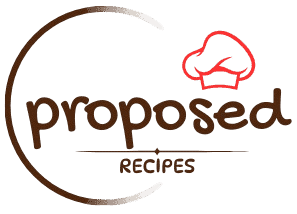
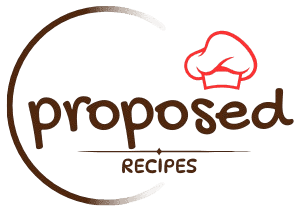
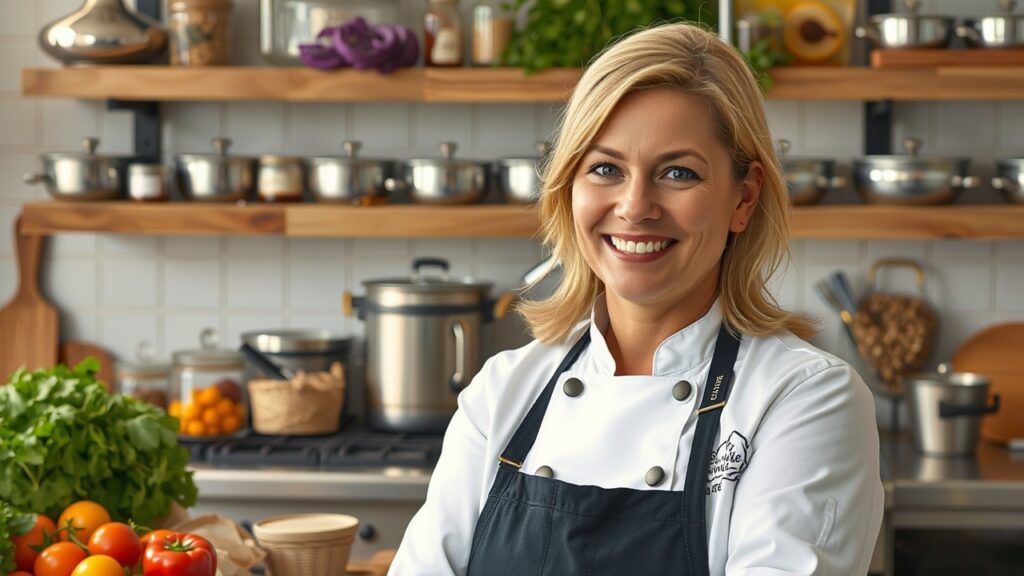
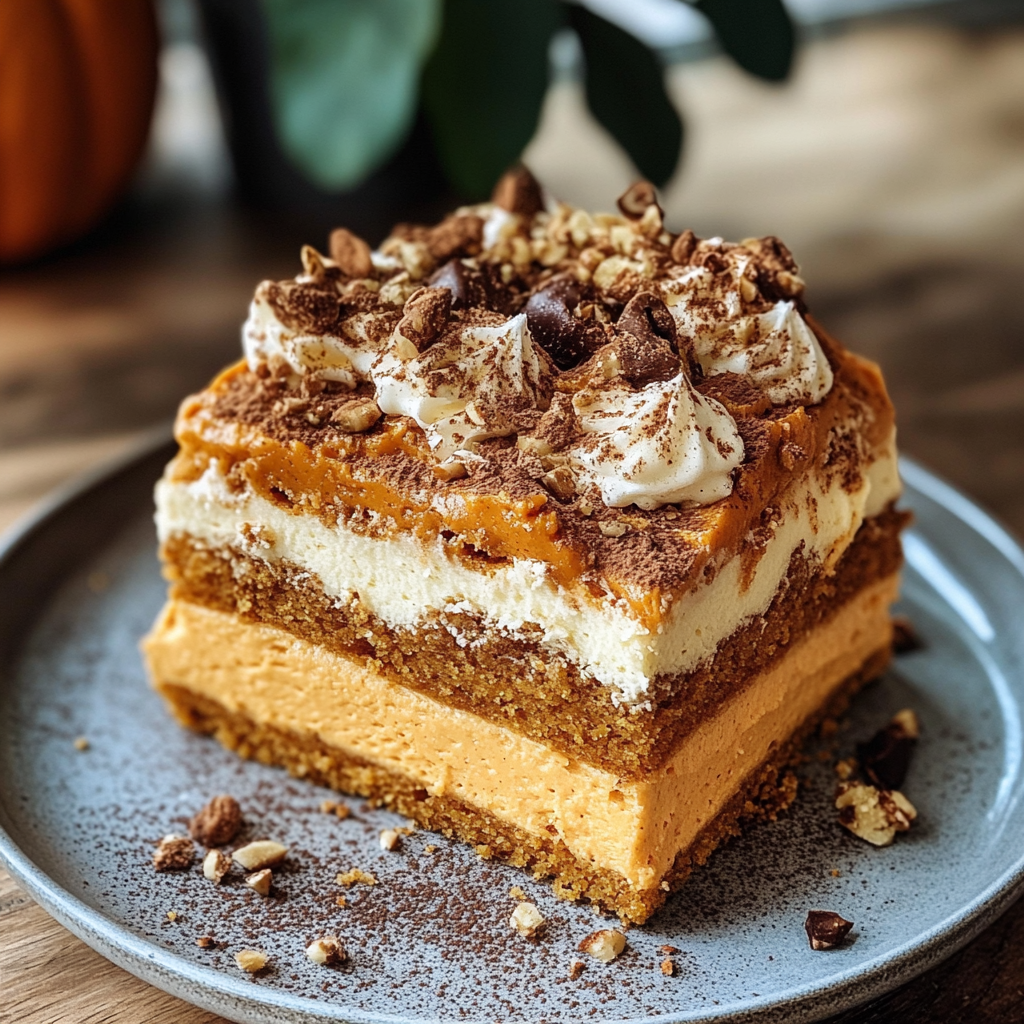


2 thoughts on “Pumpkin Cake Recipe: The Ultimate Guide”
Comments are closed.